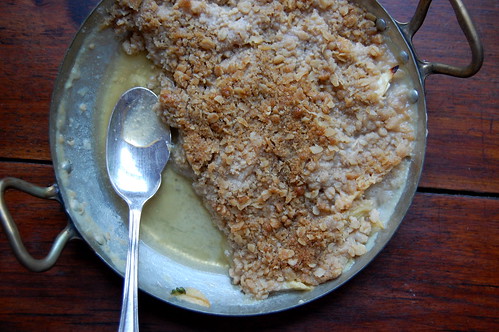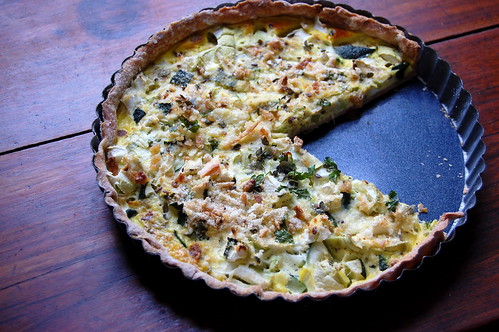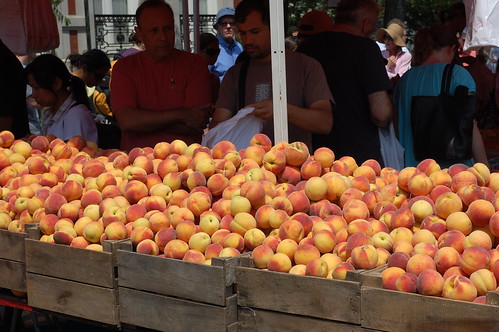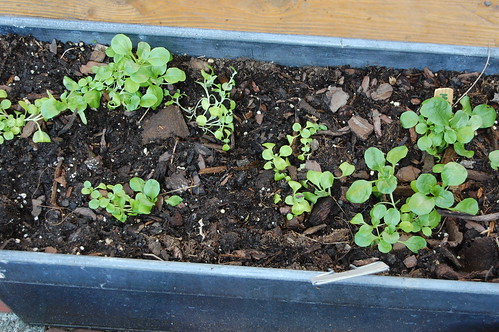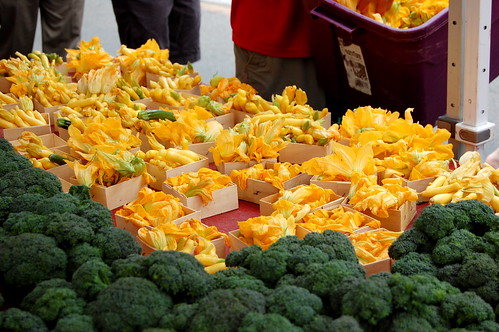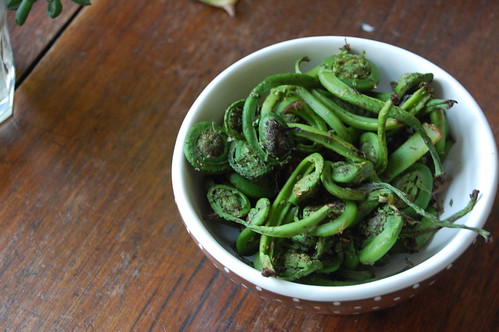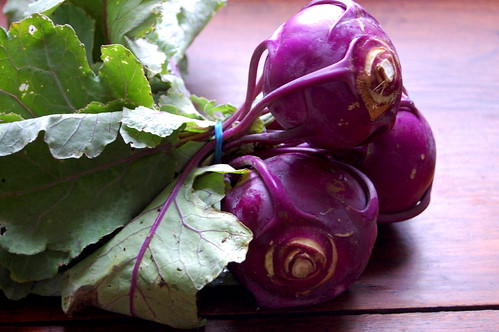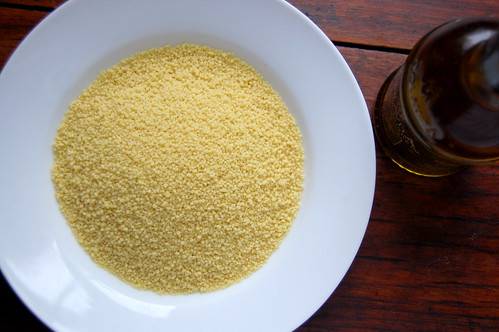
The proper way to make couscous, the Moroccan way, is to steam it. For those of us who grew up with the couscous in a box--and I think that's most people in the US--why would you bother with steaming when that box stuff cooks in five minutes? Well, because steamed couscous is light, ethereal, fluffy, and full of flavor. The last time I made instant couscous it came out like a clumped brick.
Steaming couscous is a bit time consuming, but it's meant to cook on top of whatever stew or tagine or other dish you have going. And as is often the case with stews, steaming the couscous is a welcome distraction as you wait for the meat to get tender in that seemingly endless 2 or 3 hours of stewing.
The basic technique is this - couscous, which is basically teeny tiny pearls of semolina pasta, is tossed with olive oil to coat. Then it is tossed with water, placed in a steamer basket (I line mine with cheesecloth because the holes are fairly large) and steamed either over water or over whatever you are cooking. You steam the couscous for about 15 minutes, then you remove it from the heat to rest, fluffing it, then you repeat the process. If you're lazy, two steamings will suffice, but thorough cooks will do as many as four steamings.
Couscous is typically served plain alongside a flavorful stew, kind of like rice alongside Chinese. One of the ideas behind steaming the couscous over the stew (besides being economical) is that the couscous absorbs some of the flavor of the stew. I like to think of steamed couscous kind of like fresh pasta: no you're not going to make it every day, but it's wonderful when you do.
Steamed Couscous
The traditional vessel for this is called a couscoussier, kind of like a double-boiler but the top vessel has a mesh bottom, however any old steamer combination of pots will do. Non-instant couscous is readily available in many grocery stores- Bob's Red Mill is one common brand, and some specialty shops carry the Mhamsa brand of hand-crafted Tunisian couscous.
1 lb couscous (not instant)
2-3 tablespoons olive oil
water
salt
1. Have a steamer set up over simmering water or stew, line the steamer with cheesecloth if it has large holes. In a large bowl, rub the couscous together with the oil with your finger tips. Then toss the couscous with 1/2 cup water. Rub it together again with your fingers, you will feel it start to plump a bit. Scrape the couscous into the steamer, cover, and steam 15 minutes.
2. Place the steamed couscous back in the bowl, toss to break up clumps, and let cool for a few minutes. Now toss the couscous with 1 cup of water and a pinch of salt.
3. Steam the couscous again for another 15 minutes. Remove the couscous back to the bowl again and cool for a few minutes. Now toss the couscous with 1 to 1 1/2 cups water (depending on how done the couscous feels, you don't want to over-saturate it).
4. Steam for a final 10-15 minutes- taste for doneness. Fluff the couscous a final time, maybe add a pat of butter, and serve as desired.

